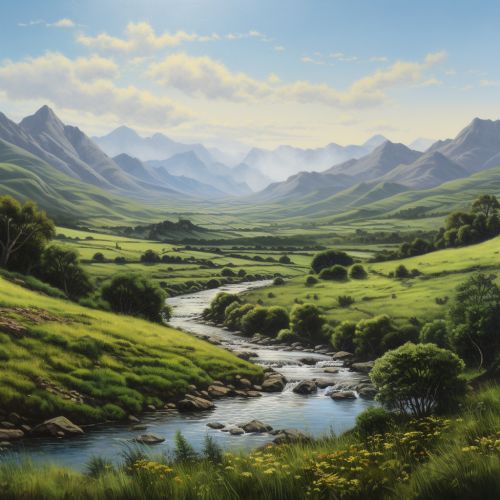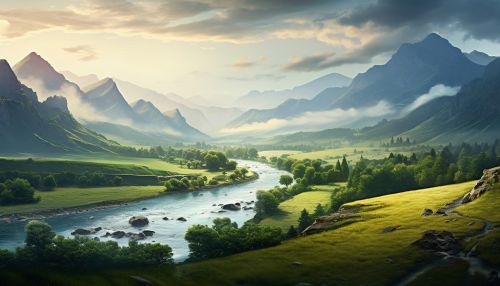Missouri River
Geography
The Missouri River is the longest river in North America, originating in the Rocky Mountains of western Montana and flowing east and south for 2,341 miles (3,767 km) before merging with the Mississippi River near St. Louis, Missouri. The river takes drainage from a sparsely populated, semi-arid watershed of more than half a million square miles (1,300,000 km2), which includes parts of ten U.S. states and two Canadian provinces.


The river's course roughly follows the edge of the glaciated region during the last Ice Age. The Missouri River Valley is a series of steep bluffs and low bottoms, making it a classic example of a meandering alluvial river. The valley is asymmetric, with a broad flood plain on the north side of the river and steep bluffs on the south side.
History
The Missouri River has a rich history, serving as a significant transportation route for Native American tribes, European explorers, and American pioneers. The river was a vital part of the Lewis and Clark Expedition, which explored the newly acquired western territory of the United States in the early 19th century.
Hydrology
The Missouri River's hydrology is complex, with a large number of tributaries and a significant variation in flow. The river's flow is regulated by a series of dams and reservoirs, which were constructed in the mid-20th century. These structures have significantly altered the river's natural flow patterns and have had substantial environmental impacts.
Ecology
The Missouri River and its tributaries support a diverse range of flora and fauna. The river's floodplain is home to a variety of wildlife, including numerous bird species, mammals, reptiles, and amphibians. The river also supports a diverse fish community, including several species of catfish, bass, and sturgeon.
Economic Importance
The Missouri River plays a significant role in the economies of the states it passes through. The river is a major source of water for irrigation, municipal water supplies, and industrial use. It also supports a variety of recreational activities, including fishing, boating, and wildlife viewing.
Conservation and Management
Conservation and management of the Missouri River are critical issues. The river's health is threatened by pollution, habitat loss, and the impacts of climate change. Efforts to restore and protect the river's health are ongoing and involve a variety of stakeholders, including government agencies, non-profit organizations, and local communities.
